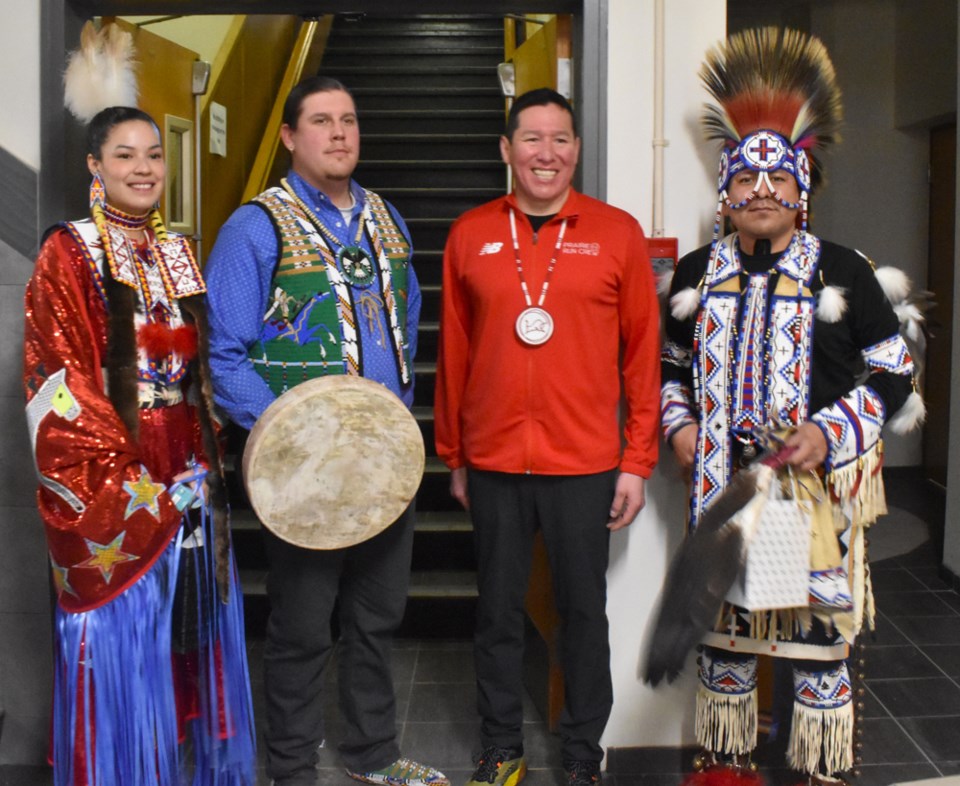SASKATOON — Tarrant Cross Child says he believes Saskatoon is a city that is leading in responding to the 94 calls to action compiled on the final report by the Truth and Reconciliation Commission almost a decade ago.
Cross Child, a member of the Blackfoot Confederacy from the Kanai Nation in Southern Alberta, was one of the speakers in last week’s Indigenous discussion panel at the St. Thomas Moore College Auditorium.
Delia Opekokew, who is the first woman to be admitted to the bar associations of Ontario and Saskatchewan, and Darlene Okemaysim-Sicotte were the other members of the panel. Both are Cree women.
Okemaysim-Sicotte is also the co-chair of Iskwewuk E-wichitochik (Women Walking Together), an organization founded almost 20 years ago that has been advocating and raising awareness for missing and murdered indigenous women, girls and two-spirit people.
Cross Child told SASKTODAY that things are much better today compared to when he was growing up in Alberta. He was born in Lethbridge, but his family moved to Medicine Hat when he was eight years old where he grew up in a predominantly white neighbourhood where his family was among the few Indigenous resident.
“And I experienced racism, not only from my friends or classmates but even from teachers. There was one time when I was in the fourth grade when we were learning about Blackfoot people and one of the words we had to spell in a test was the word Indian. The teacher used it in a sentence; she said: ‘All Indians like to drink.’”
“That’s in Grade 4. Even now, the term [Indian] alone, we don’t use it. We use the word Indigenous because that includes everyone. You could be Cree or Dene, so we say Indigenous peoples. Within the Indigenous community, they could be First Nation or Métis or Inuit.,” said Cross Child, who is an ambassador for New Balance Canada.
He added that there are status and non-status under First Nations, where the former is according to the Indian Act, a law that guides the Federal Government’s interaction with Canada’s First Nations and their members.
“For me, I’m status so I belong to a tribe in Canada and I have a card that says where that tribe is from and attached to it is a number that was given to me from the Crown,” said Cross Child.
“Yes, it is so much better today. I think Saskatoon is taking a big lead in the Truth and Reconciliation’s calls to action. You have Mayor Charlie Clark going to events in the city, like Orange Shirt Day and National Day for Truth and Reconciliation. He wears an orange T-shirt and he not only wears it but he also encourages other people to do so — wear and attend these events.”
He said that he is also doing his share in the path of healing and reconciliation by doing speaking engagements across the country where he helps people understand the 94 calls to action published by the TRC in 2015.
“And a lot of people haven’t heard of the 94 calls to action. Here we are [in Saskatoon] learning about it. [People] hearing the stories from [Indigenous] panelists, hearing the songs and watching the dances. That’s good for all of us,” said Cross Child, who added that media — broadcast, online and print — also help by writing stories on issues about Indigenous Peoples.
“You have that experience and take it all in. It is not a rock concer, but, when they get home, they’re going to tell someone the things that they’ve learned and that is how we keep moving forward. So, we are doing it as a society and it needs to be something that we strive to do every day.”




